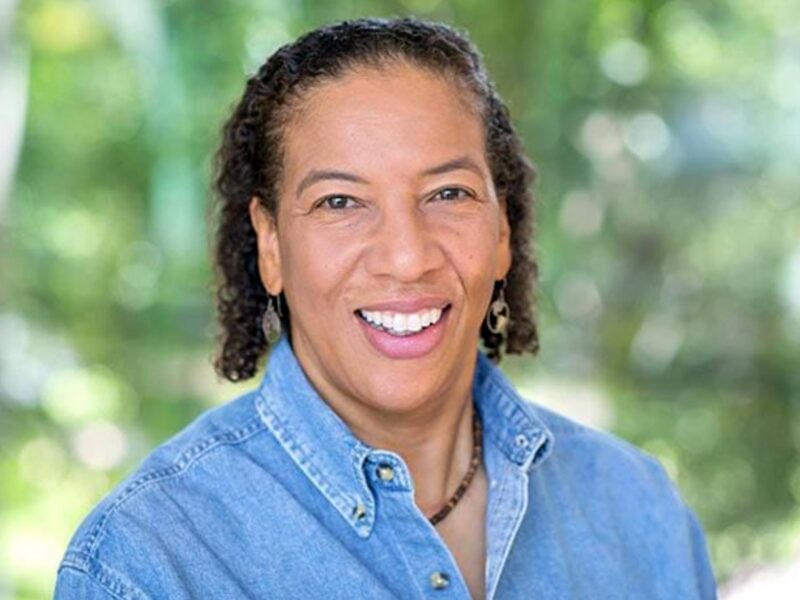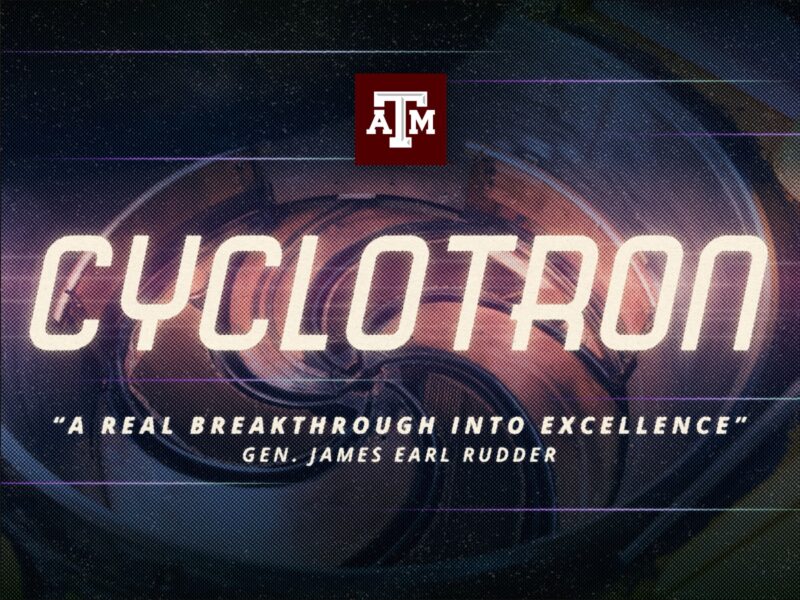English Department Inherits Shakespeare Project 150 Years In The Making
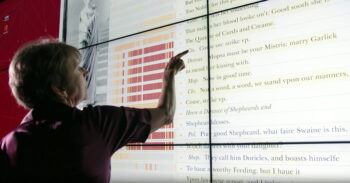
Shakespeare is ubiquitous in the Western world, whether it be through reading his plays in nearly every level in schools to watching the latest screen adaptation. What many may not know is what it takes to maintain the texts, edits and extensive conversations regarding Shakespeare’s oeuvre that informs scholars, creatives and fans.
One effort is the New Variorum Shakespeare (NVS) at Texas A&M University. What began as a print compendium has evolved into a digital project recently inherited by the Department of English that spans more than 150 years of knowledge.
“A variorum edition of any work is considered to be the gold standard academic edition,” Texas A&M Distinguished Professor of English Dr. Margaret Ezell said. “To do that of Shakespeare, one of the central core figures in the English literary canon, is something that future scholars will follow when editing things that are not by Shakespeare. It’s incredibly influential. What the NVS is doing is putting that into the 21st century, creating the future of Shakespeare studies and the way we think about editing or studying the past.”
Defining New Variorum Shakespeare
Literally, the term variorum comes from the Latin phrase editio cum notis variorum, or “an edition with the notes of the various [editors and commentators].” Thus, the purpose of the NVS is to “collect what has been written by various commentators, critics and editors.” This lineage of intellectual work begins with American lawyer Horace Howard Furness in Philadelphia, circa 1871, when he gathered editions and commentaries on Romeo and Juliet. Furness added “new” to his variorum, as there had been other versions at the time.
The NVS has since exchanged hands between various professional academics and organizations while even having its own advisory board, most notably the Modern Language Association of America. Along the way, the NVS expanded to include more plays, including Macbeth, Hamlet, King Lear, Othello, The Winter’s Tale and A Midsummer Night’s Dream, among many others.
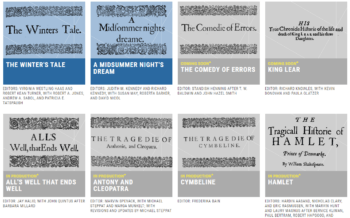
In 2019, Texas A&M English Professor Dr. Laura Mandell, then the director of the Center of Digital Humanities Research (CoDHR), took on the NVS to digitally publish and build a website to make the series publicly accessible, given that one variorum for a single play can cost up to $300. The NVS makes physical volumes of commentary, texts and folio editions free to access.
The NVS is transitioning to the Department of English with Dr. Katayoun Torabi as the digital editor, joined by Dr. Dorothy Todd and Dr. Kris May as associate digital editors. The digital editors work with two general editors, volume editors who work specifically on a text and the NVS Board, which makes the larger decisions for the project. As part of its new leadership role, the Department of English has ambitious plans in store for the NVS.
“This project foregrounds the cutting-edge, interdisciplinary research, scholarship and teaching that is happening here at Texas A&M,” Todd said. “We’re really on the forefront of digital humanities and literary studies.”
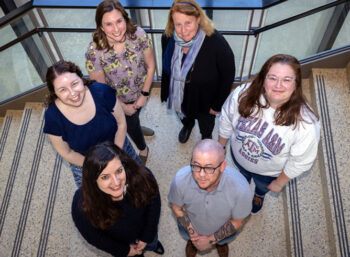
‘A Conversation With Generations Of Scholars’
One of the major efforts for the NVS is continuing to build the website that publishes variorums through three phases. The first was digitally publishing physical books that have already been encoded through Extensible Markup Language (XML), a text-encoding system for storing, transmitting and reconstructing data. As of now, The Winter’s Tale and A Midsummer Night’s Dream are accessible. The second and current phase is building digital editions from scratch with new editors, which entails a process of collecting editions, converting them to machine readability through optical character recognition, transcribing them, collating up to 80 editions of a single play to find any textual differences and then XML encoding them for online publication.
The NVS website will continue publishing variorums into a three-panel interface of textual notes, commentary notes and the play text itself with cross-link capabilities. The digital variorums digitize changes across editions, scholarly conversations on said changes and demonstrations of how these changes manifest in staging. Changes can include shifts in grammar to entirely different endings or lines in performances of a play across centuries.
“There’s a lot of labor that goes into a project of this magnitude,” May said. “When you are the digital editor of a project, you kind of have to admit that the work will never be finished. It’s ongoing and ongoing. Perfection is not achievable. That’s not the goal of a variorum edition. It’s entering a conversation with generations of scholars.”
The third phase will tackle visualizations and building in teaching tabs. The team plans on adding teaching exercises to help guide students through the commentary notes with step-by-step instructions, questions and an appendix where they can see sources for a historical staging of the play they are studying.
“A student or even a performer thinking about staging a character in a play can go into the NVS and see how it’s been done in the past to inform their characterization,” Torabi said. “When you’re looking at a single variorum for a play, you’re essentially looking through time to its very beginnings, now all visible through one click of a button.”
Graduate and undergraduate students are also contributing to the project’s success, including Texas A&M English Ph.D. student Alexandra LaGrand ‘26.
“It’s cool to inherit something that has such a massive legacy in Shakespeare studies, especially as someone who is coming up in the field,” LaGrand said. “I’m really excited for the accessibility and user interface of the project. I’m already planning on using all these sources and amazing materials in my future classrooms.”
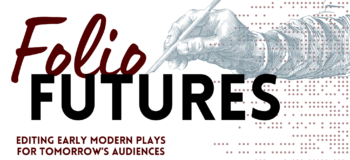
A Symposium For All
To celebrate Texas A&M’s designation as the host institution for the NVS and commemoration of the 400th anniversary of the publication of Shakespeare’s First Folio, a symposium titled “Folio Futures: Editing Early Modern Plays for Tomorrow’s Audiences” will convene April 26 at the Texas A&M Hotel and Conference Center Corps Room. The goal of the day-long event is to assess the history of and future possibilities for editing Shakespeare and his contemporaries. The symposium is co-chaired by Ezell and Dr. Kevin O’Sullivan ’23, aided by a team consisting of students, faculty and staff including Todd, Torabi, Lindsey Jones ’24 and Hannah Bowling ’21.
“We want to make the NVS available to all of our students and faculty who are doing research to have the best tools possible,” Ezell said. “We want to be part of a new vision. That’s why we gave this convening the title ‘Folio Futures.’ The prior NVS was great, but that was for a previous generation and a select scholarly community. This is for everybody.”
Participants will be convened into round table sessions, where they will hear presentations on the symposium’s topic and discuss the future of editing early modern texts to meet the evolving needs of teachers, students and scholars. O’Sullivan notes that this symposium will be the latest of several events in recent years designed to bring the world of early modern drama to the public, citing Texas A&M being the Texas host for the “First Folio! The Book That Gave Us Shakespeare” celebration funded by the Folger Shakespeare Library and the National Endowment for the Humanities in 2016.
“Texas A&M has a long-standing and international reputation for being on the vanguard of Shakespeare studies as well as research of the early modern period more generally,” O’Sullivan said. “It has a similar reputation for offering world-class public humanities programming. This symposium offers a new opportunity to bring these two missions together in exciting and productive ways.”
In addition, there will be two keynote lectures by Dr. Kristen Bennett, associate professor of English at Framingham State University and founder of the Kit Marlowe Project, and Dr. Eric Rasmussen, professor and chair of the English department at the University of Nevada, Reno. The symposium is free and open to Texas A&M students, faculty and staff as well as to the public.
This project foregrounds the cutting-edge, interdisciplinary research, scholarship and teaching that is happening here at Texas A&M. We’re really on the forefront of digital humanities and literary studies.
The team already anticipates attracting scholars from all over the United States, the United Kingdom and Canada, ranging from experienced Oxford University professors to digital humanities scholars and new talents working on various editions. In anticipation of the global audience that Shakespeare brings, the symposium will be presented through synchronous live streaming.
“It’s amazing to me that many famous Shakespeare scholars are going to be here in the same room on our campus,” May said. “It’s incredible the number of folks who’ll be here.”
Though the NVS is built upon a history spanning 150 years, the Department of English is making sure that Shakespeare studies is well prepared for the future through an inter-generational effort spanning elder and new scholars alike, living up to the College of the Arts and Sciences’ full potential of merging the past, present and future through technology and human ingenuity.
“The NVS is an inheritance” Jones said. “But in some ways, it’s changing that inheritance into something more forward facing and future-oriented. The work we’re doing brings this history more into where the future of scholarship is going, where it’s more public facing and accessible, rather than in 30-pound books in a library that people can’t access unless they have very specific credentials.”
